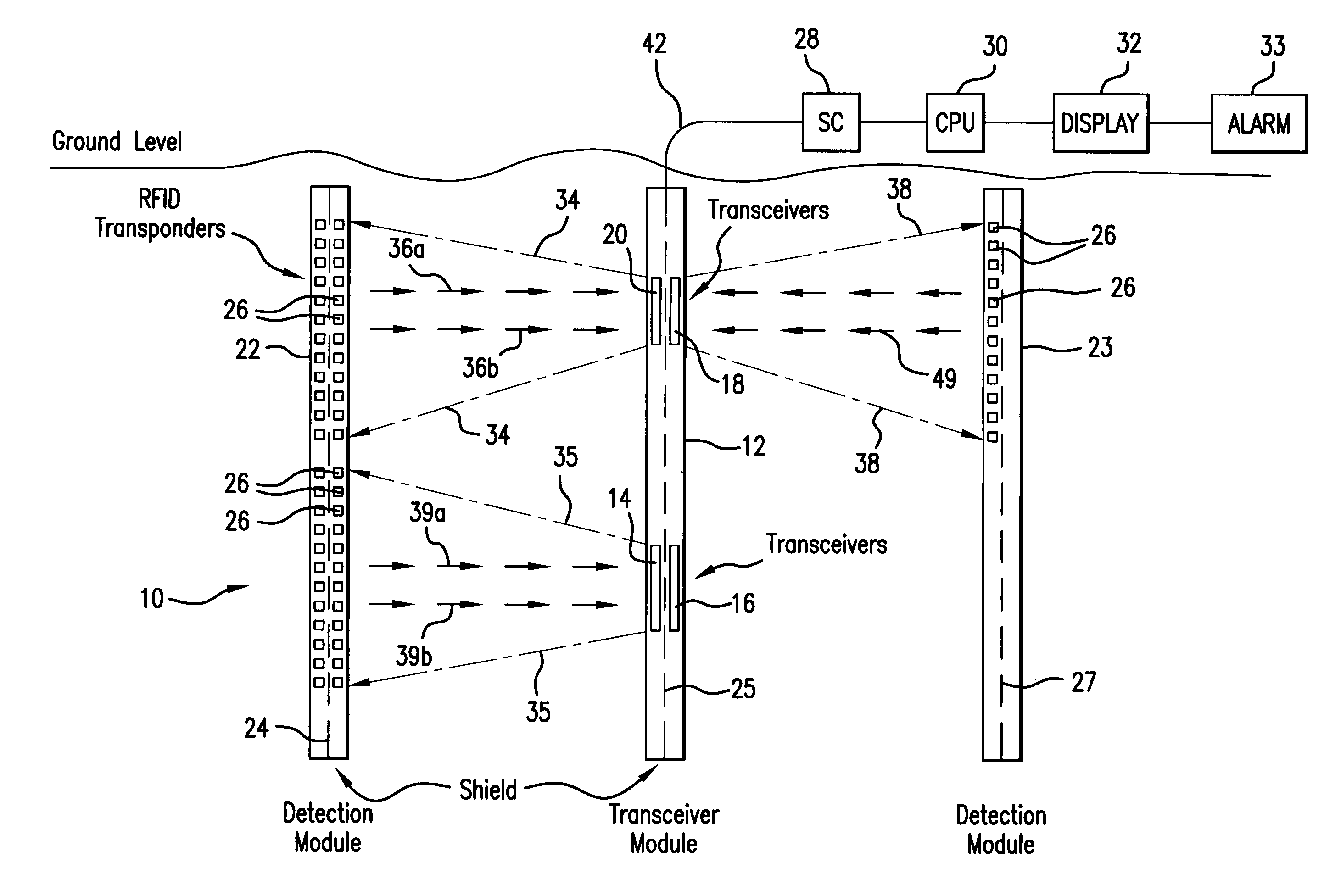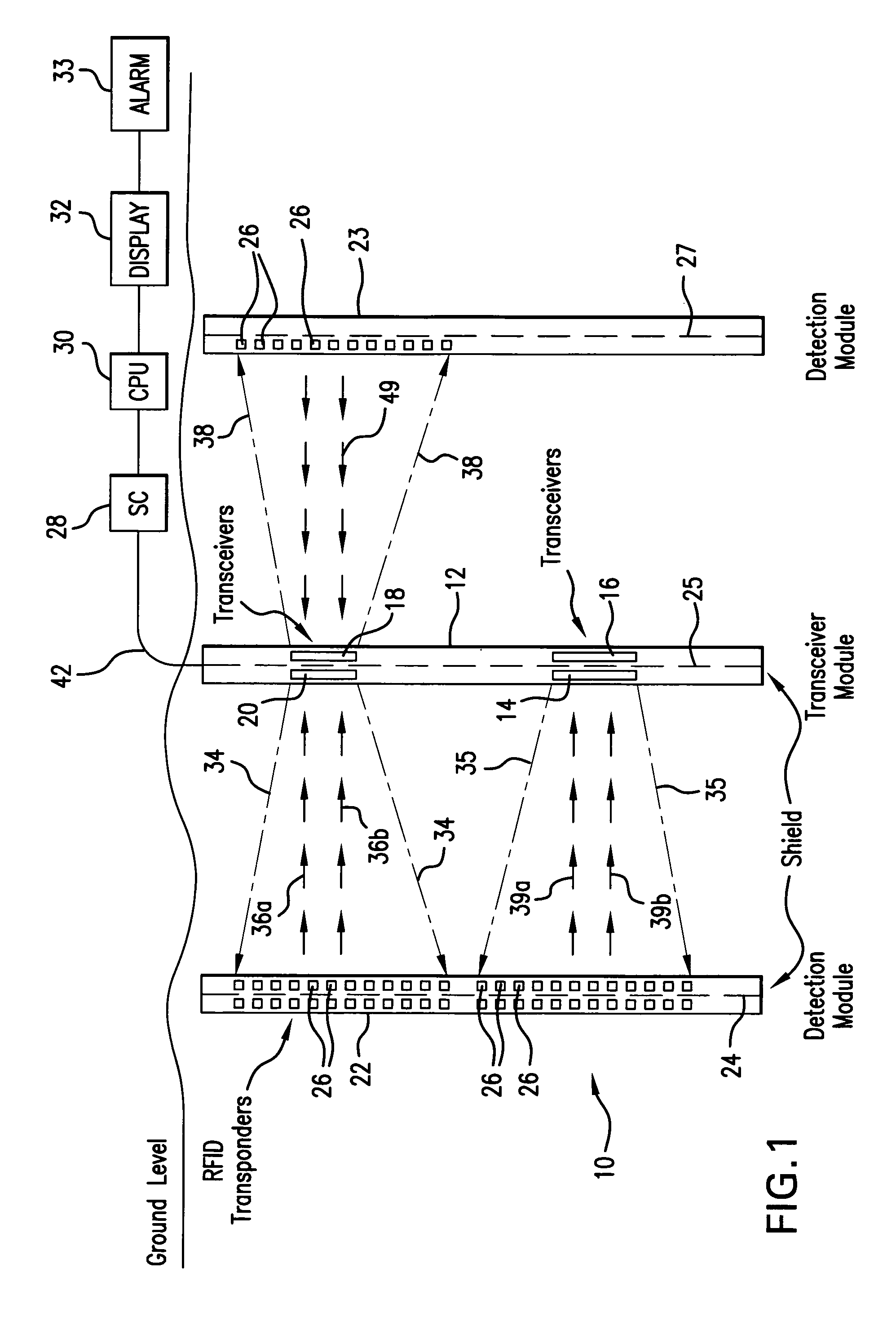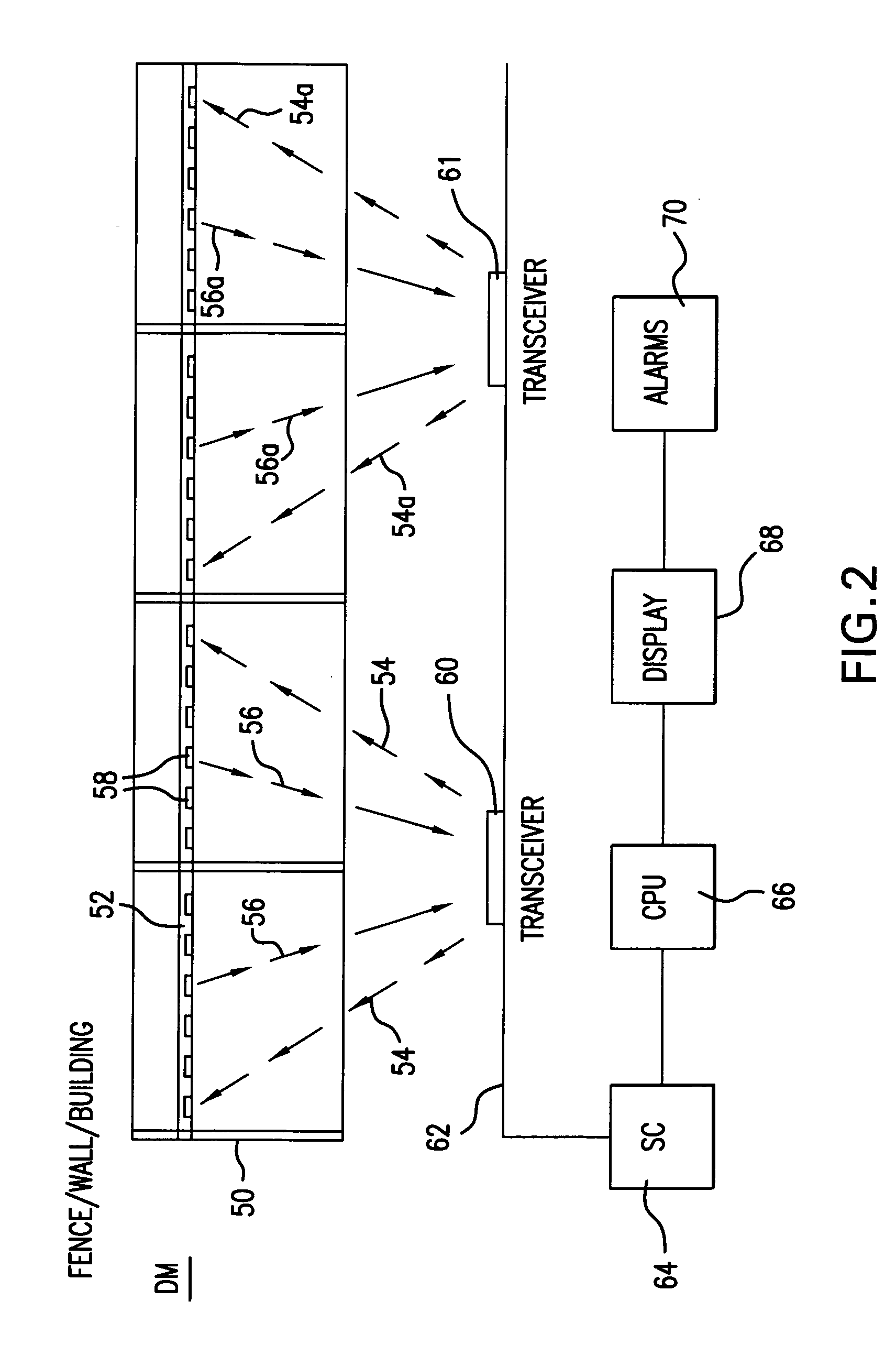Intrusion detection system for underground/above ground applications using radio frequency identification transponders
a radio frequency identification and intrusion detection technology, applied in the direction of burglar alarm short radiation actuation, burglar alarm electric actuation, instruments, etc., can solve the problems of inability to detect vandalism or terrorist threats to the exterior of the facility and the immediate vicinity of a structure or area to be protected, cctv camera effectiveness is less, ir sensors and cctv camera damage, etc., to achieve the effect of reducing site work in engineering, reducing the cost of establishing
- Summary
- Abstract
- Description
- Claims
- Application Information
AI Technical Summary
Benefits of technology
Problems solved by technology
Method used
Image
Examples
first embodiment
[0015]As illustrated in FIG. 1, the present invention would include a transceiver module (TM) 12 as well as two detection modules (DM) 22, 23. As can be appreciated, additional TMs as well as additional DMs could be employed. The TMs and the DMs would be buried in holes drilled vertically along the perimeter of the below ground level and parallel to each security zone (SZ) 10. The TM 12 would generally consist of a PVC or plastic pipe placed vertically in the ground. The TM would include radio frequency (RF) transceivers 14, 16, 18 and 20. It can be appreciated that more or less transceivers can be included in each TM. The detection modules 22, 23 would consist of a plurality of radio frequency identification (RFID) passive transponders placed in the PVC or plastic pipe at approximately one foot intervals. Similar to the TM 12, the PVC or plastic pipe is vertically inserted into the ground. The detection modules 22, 23 would be separated from the TM 12 at a distance of approximately...
second embodiment
[0027]FIG. 2 illustrates the present invention. This embodiment would allow the present invention to be used for the above ground supervision of a fence, brick or concrete walls, monuments and other objects 50. Above ground transceivers 60 or 61 would broadcast coded RF signal 54, or 54a respectively, to power a plurality of RFID transponders 58 arranged on or in a cable 52 which could be housed in a PVC pipe provided horizontally on and attached to the fence, building or other structure 50. Alternatively, the RFID transponders 58 could be arranged on a surface or embedded in or behind surfaces (i.e., wood, brick / concrete). The RFID transponders 58 would respond to one of the transceivers 60, 61 through electromagnetic inductive coupling and transmit their unique code 56 to be received by its respective transceiver 60, 61. The transceiver 60, 61 would periodically or continually broadcast the electromagnetic field as its unique code for each transceivers 60, 61 and the RFID transpon...
PUM
 Login to View More
Login to View More Abstract
Description
Claims
Application Information
 Login to View More
Login to View More - R&D
- Intellectual Property
- Life Sciences
- Materials
- Tech Scout
- Unparalleled Data Quality
- Higher Quality Content
- 60% Fewer Hallucinations
Browse by: Latest US Patents, China's latest patents, Technical Efficacy Thesaurus, Application Domain, Technology Topic, Popular Technical Reports.
© 2025 PatSnap. All rights reserved.Legal|Privacy policy|Modern Slavery Act Transparency Statement|Sitemap|About US| Contact US: help@patsnap.com



